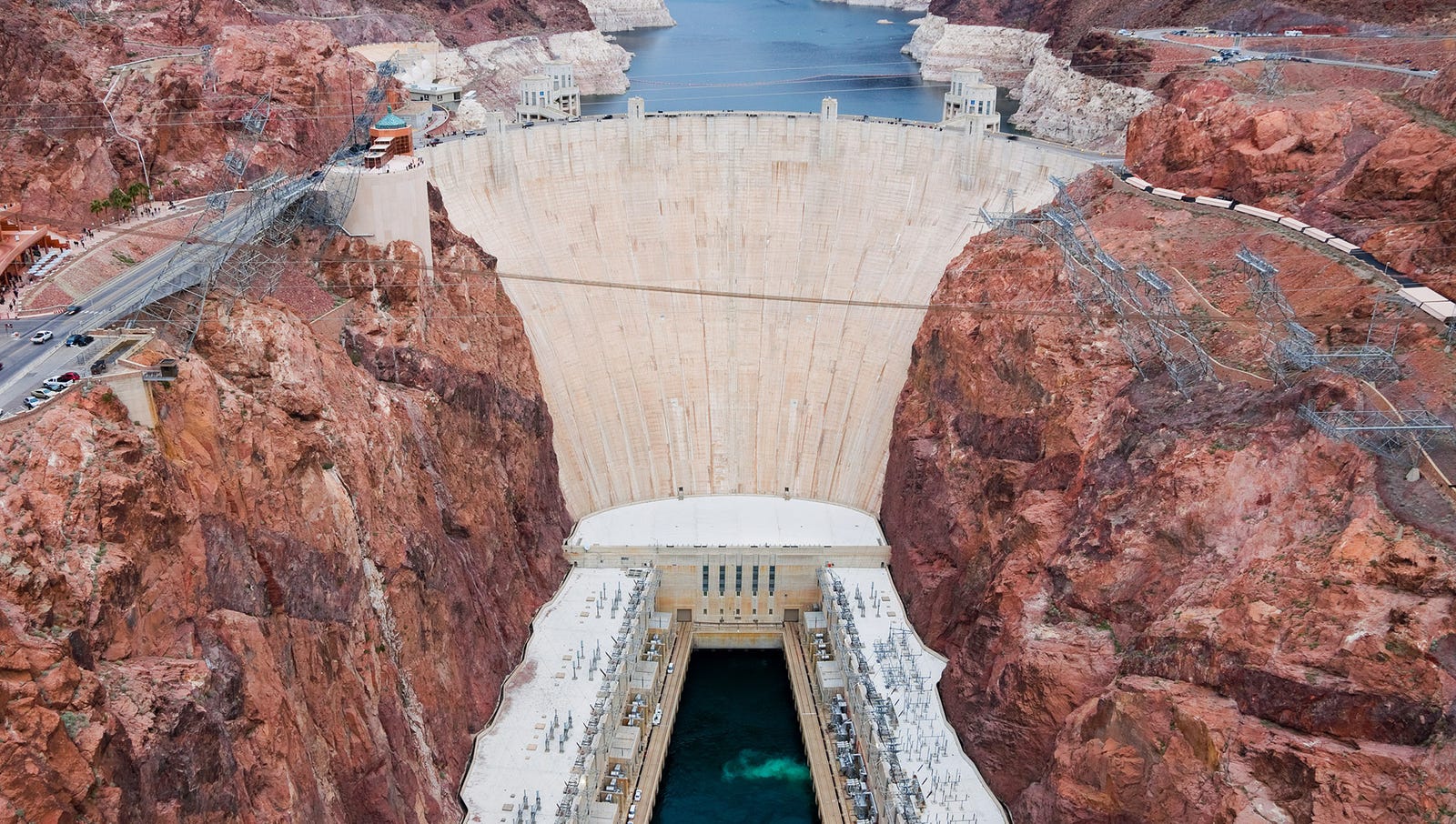First up, America's Finest News Source:

CAMBRIDGE, MA— Expressing continued bafflement at the practical knowledge and proficiency required to construct the massive structure, leading historians announced Friday that they remained unsure how Americans managed to build the Hoover Dam. “Decades into researching this tremendous feat of engineering, the question of how Americans ever mustered the ingenuity, determination, and resources to pull it off remains veiled in mystery,” said Harvard researcher Pritam Singh, noting that the enigmatic dam suggested Americans once possessed a level of competence, civic planning, and mastery of structural engineering far beyond what history would suggest........MORE
And from the U.S. Bureau of Reclamation:
Hoover Dam
The Story of Hoover Dam - Essays
- Artwork
- Cofferdams
- Concrete
- Fatalities
- High Scalers
- Jet Flow Gate Test
- Spillways
- Tunnels
- Wages
- What is Biggest?
- Workforce
- Articles from the Past
Fatalities at Hoover Dam
Many people who visit Hoover Dam ask: 1) How many people died building the dam?; and 2) How many of those are buried in the concrete? The second question is the easiest to answer -- none! No one is buried in Hoover Dam.
The dam was built in interlocking blocks. Each block was five feet high. The smallest blocks were about 25 feet by 25 feet square, and the largest blocks were about 25 feet by 60 feet. Concrete was delivered to each block in buckets, eight cubic yards at a time. After each bucket was delivered, five or six men called "puddlers" would stamp and vibrate the concrete into place, packing it down to ensure there were no air pockets in it. Each time a bucket was emptied, the level of concrete would raise from two inches up to six inches, depending on the size of the block. With only a slight increase in the level at any one time, and the presence of several men watching the placement, it would have been virtually impossible for anyone to be buried in the concrete. So, there are no bodies buried in Hoover Dam.
The question about fatalities is more difficult to answer, because it depends in a large part on who is included as having "died on the project."
For example, some sources cite the number of deaths as 112. But this incorporates incidents that occurred before the dam was authorized, and well in advance of construction. This figure includes the first fatalities from 1922, when Reclamation employees J.G. Tierney and Harold Connelly -- who were conducting geological surveys from barges in the Colorado River -- fell into the river and drowned. That was 6 years before the dam was authorized, and 8 years before construction began!
Some references also include in the fatality count those who died from non-construction related causes. For example, men, women, and children who lived in Boulder City, but did not die at the dam site or as a result of working there, were included in these statistics because they were, technically, part of the Boulder Canyon Project effort, and worked for Reclamation, Six Companies Inc., or one of the many subcontractors involved in the project, or resided in Boulder City during the construction years.
In addition, some references include those who may have been injured at the dam site while working there, but did not die there, while others do not. Perhaps these individuals were being transported to a hospital, were in a hospital, or had been discharged from a hospital when they died. But since they were not on the job site at the time, they were not included in the "official" number.
The "official" number of fatalities involved in building Hoover Dam is 96. These were men who died at the dam site (classified as "industrial fatalities") from such causes as drowning, blasting, falling rocks or slides, falls from the canyon walls, being struck by heavy equipment, truck accidents, etc. Industrial fatalities do not include deaths from heat, pneumonia, heart trouble, etc.
The record regarding the number of fatalities that occurred at Hoover Dam during its construction is just not that clear. However, the following information comes from the Hoover Dam Project History, volumes 1 through 5, 1931 to 1935, and provides the best information Reclamation has available on this subject.
The information is presented in the same format as it is printed, with a separate web page for each year. Some of the information in the Project History was found to be inaccurate; in those instances, we have noted corrections in this on-line version.
Use the navigation bar located at the bottom of each page to move from page to page.